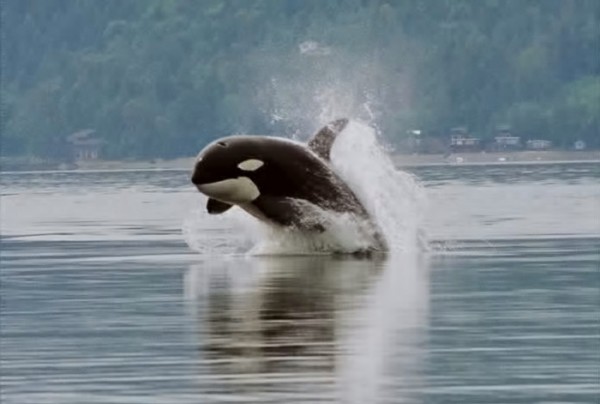By Ana Verayo, | February 03, 2016

Orca porpoising in Hood Canal, Puget Sound, Washington.
Massive cargo ships and oil tankers are apparently muffling communication signals by endangered killer whales that are dwelling in the Pacific Northwest, disrupting their hunt for food, making it more difficult to survive during migration.
Like Us on Facebook
A team of researchers from the Beam Reach Marine Science and Sustainability School led by Scott Veirs, obtained measurements of the noise produced by these commercial vessels totaling in 2,812 routes in the Haro Strait between British Columbia, Canada and Washington state in the United States. They used special instruments such as underwater microphones and complex sound analysis to gain evidence for this phenomenon.
Haro Strait is a series of straits near western Lime Kiln State Park in Washington's San Juan Island which is also a crucial habitat for exactly 84 endangered Southern Resident killer whales where they forage for food. With the help of Coast Guard tracking data, scientists were able to identify individual ships with different sound recordings.
Veirs says that these ships are numerous in the area and also, they emit much sound that can generate enough noise that can drown out other sounds in the ocean as ships have now become a dominating presence in the ocean's soundscape.
Killer whales, that are also known as orcas use echolocation to search for food. The whales can send out clicks where they listen intently to their echoes as they bounce back, in order to estimate the location and size of their prey, specifically Chinook salmon. When there is greater noise in the background, whales have a hard time locating their prey, which can make it difficult to survive.
Prior studies have linked the deep rumbling sound of passing ships and tankers to the killer whales' echolocation of food, as a growing number of commercial ships have increasing production of low frequency noise to ten fold since the 1960s, according to researchers.
Apart from the increasing number of ships that cause this background noise under the oceans, the frequencies have also increased, from medium to higher frequencies, at 20,000Hz which where killer whales are accustomed to hear.
In this new study, there is a vast range of large ships such as container ships that produce the highest median sound source levels where military vessels are often found to be the most quiet ones. This study can also help conservationists to search for solutions when it comes to underwater noise pollution, such as ships decreasing their speed by six knots to decrease their noise intensity levels by as much as half.
This new study is published in the journal PeerJ.
-
Use of Coronavirus Pandemic Drones Raises Privacy Concerns: Drones Spread Fear, Local Officials Say

-
Coronavirus Hampers The Delivery Of Lockheed Martin F-35 Stealth Fighters For 2020

-
Instagram Speeds Up Plans to Add Account Memorialization Feature Due to COVID-19 Deaths

-
NASA: Perseverance Plans to Bring 'Mars Rock' to Earth in 2031

-
600 Dead And 3,000 In The Hospital as Iranians Believed Drinking High-Concentrations of Alcohol Can Cure The Coronavirus

-
600 Dead And 3,000 In The Hospital as Iranians Believed Drinking High-Concentrations of Alcohol Can Cure The Coronavirus

-
COVID-19: Doctors, Nurses Use Virtual Reality to Learn New Skills in Treating Coronavirus Patients







